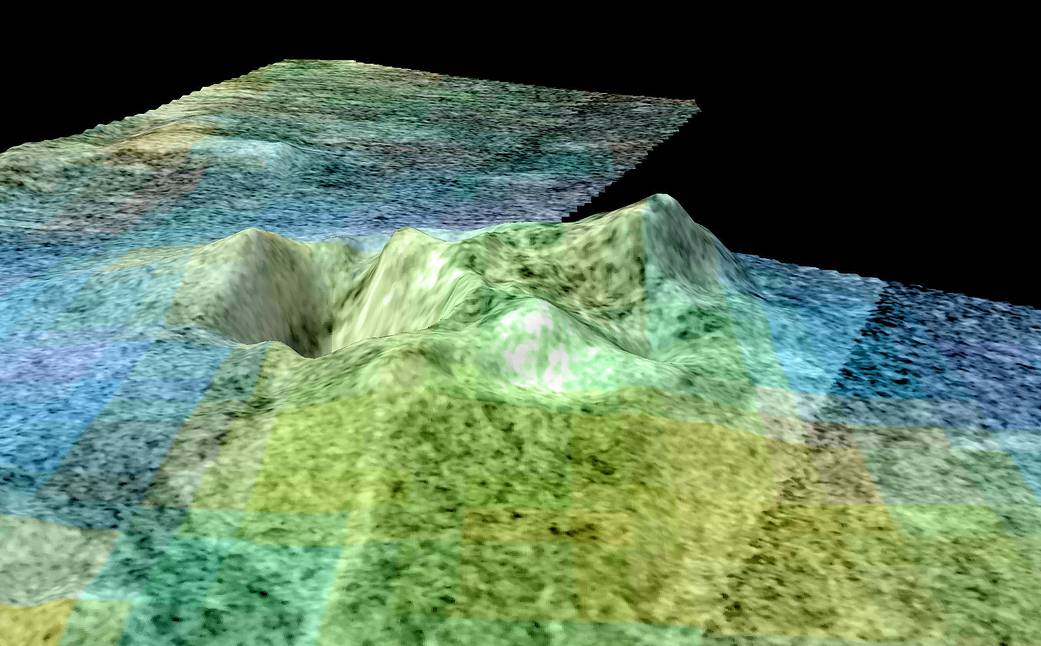
Based on data from NASA’s Cassini spacecraft, this image shows an area of Saturn’s moon Titan, known as Sotra Facula. Scientists believe Sotra is the best case for a cryovolcano, or ice volcano. The flyover shows two peaks more than 3,000 feet (about 1,000 meters) tall and multiple craters as deep as 5,000 feet (1,500 meters). The image also shows finger-like flows, which also indicate the presence cryovolcanism.
The 3-D topography comes from Cassini’s radar instrument. Topography has been vertically exaggerated by a factor of 10. The false color in the initial frames shows different compositions of surface material as detected by Cassini’s visual and infrared mapping spectrometer. In this color scheme, dunes tend to look relatively brown-blue. Blue suggests the presence of some exposed ice. Scientists think the bright areas have an organic coating that hides the ice and is different and lighter than the dunes. The finger-like flows appear bright yellowish-white, like the mountain and caldera. The second set of colors shows elevation, with blue being lowest and yellow and white being the highest. Dunes here appear blue because they tend to occupy low areas. The finger-like flows are harder to see in the elevation data, indicating that they are thin, maybe less than about 300 feet (about 100 meters) thick.
Image Credit: NASA/JPL-Caltech/USGS/University of Arizona



























